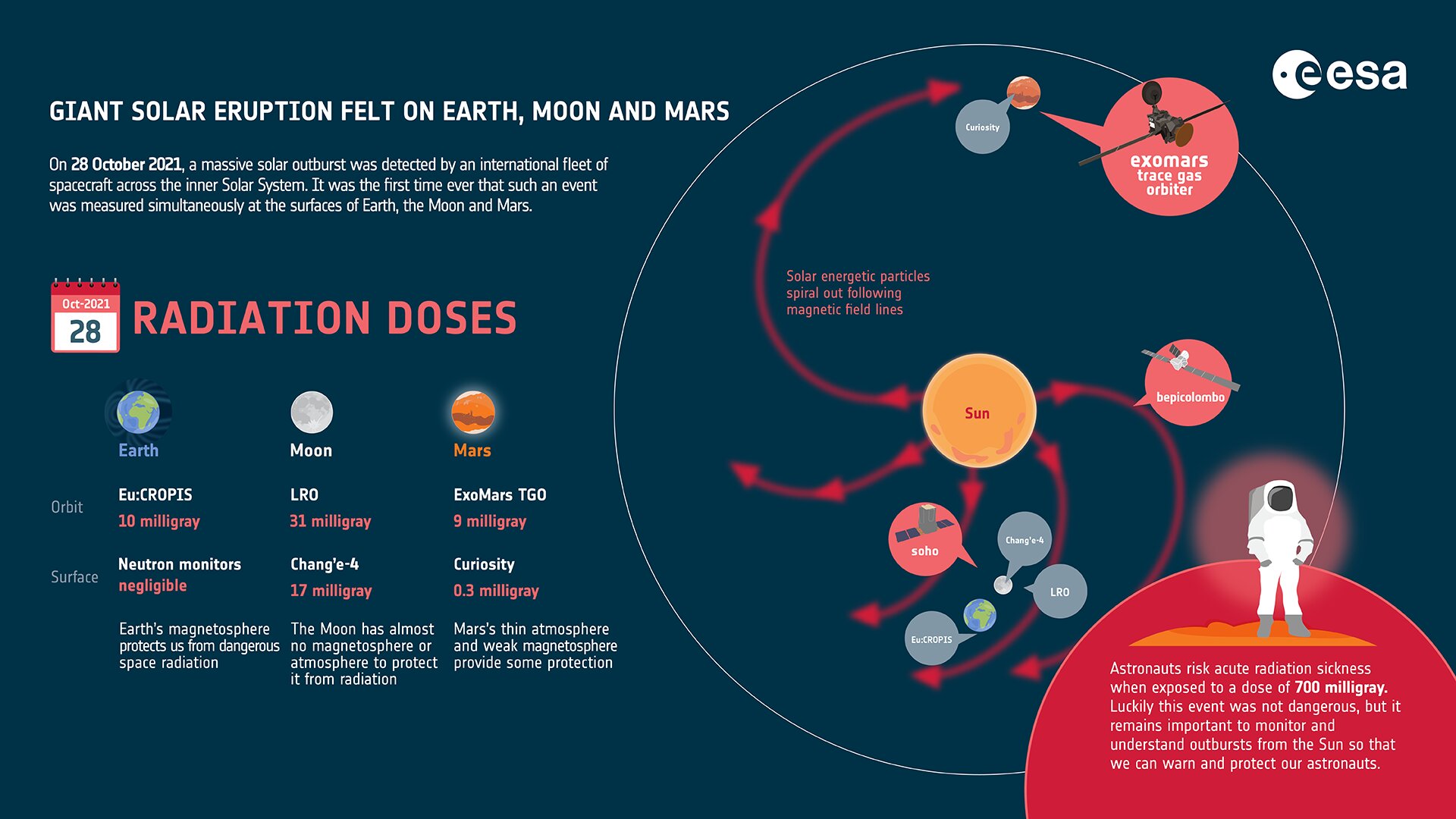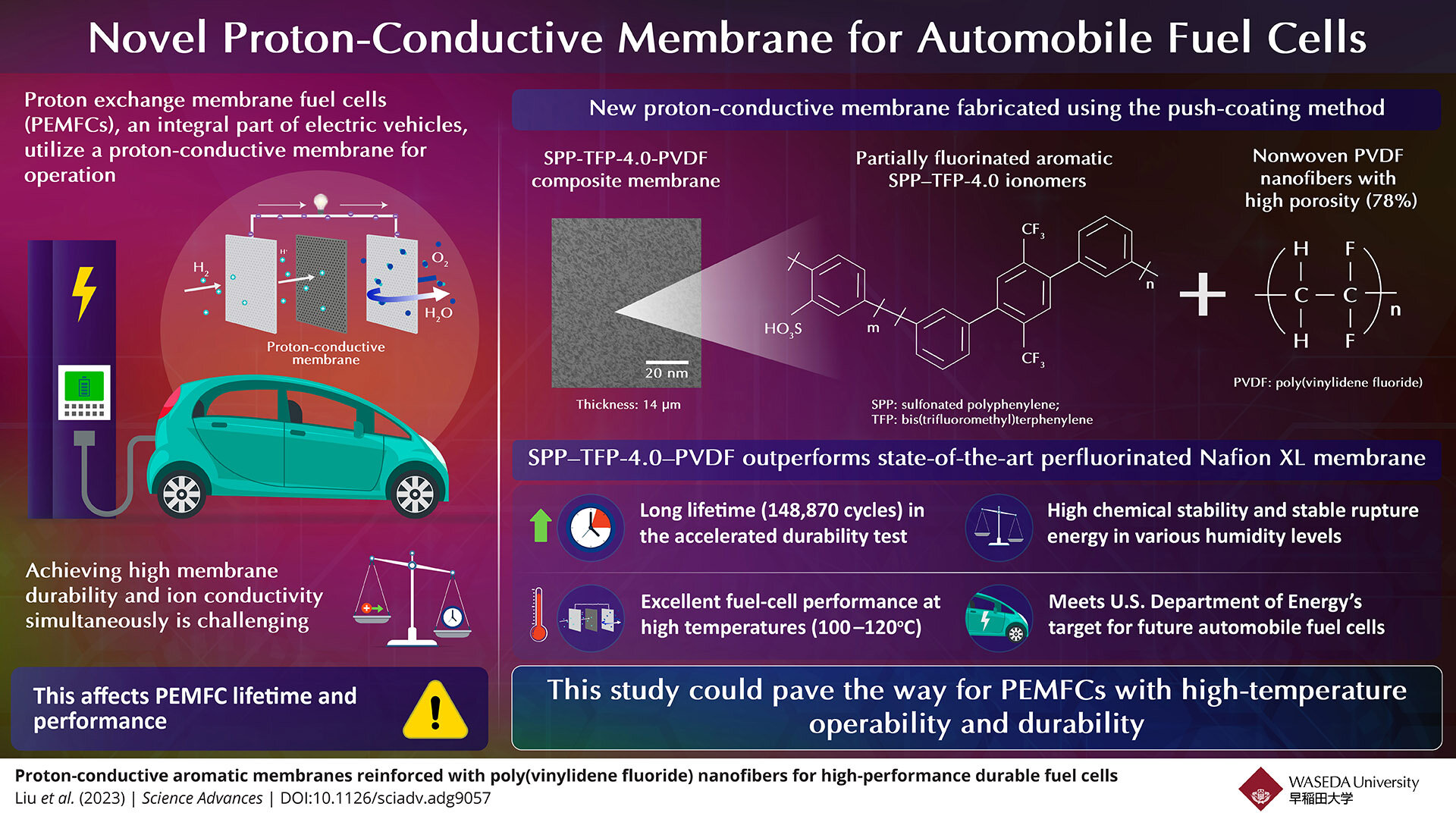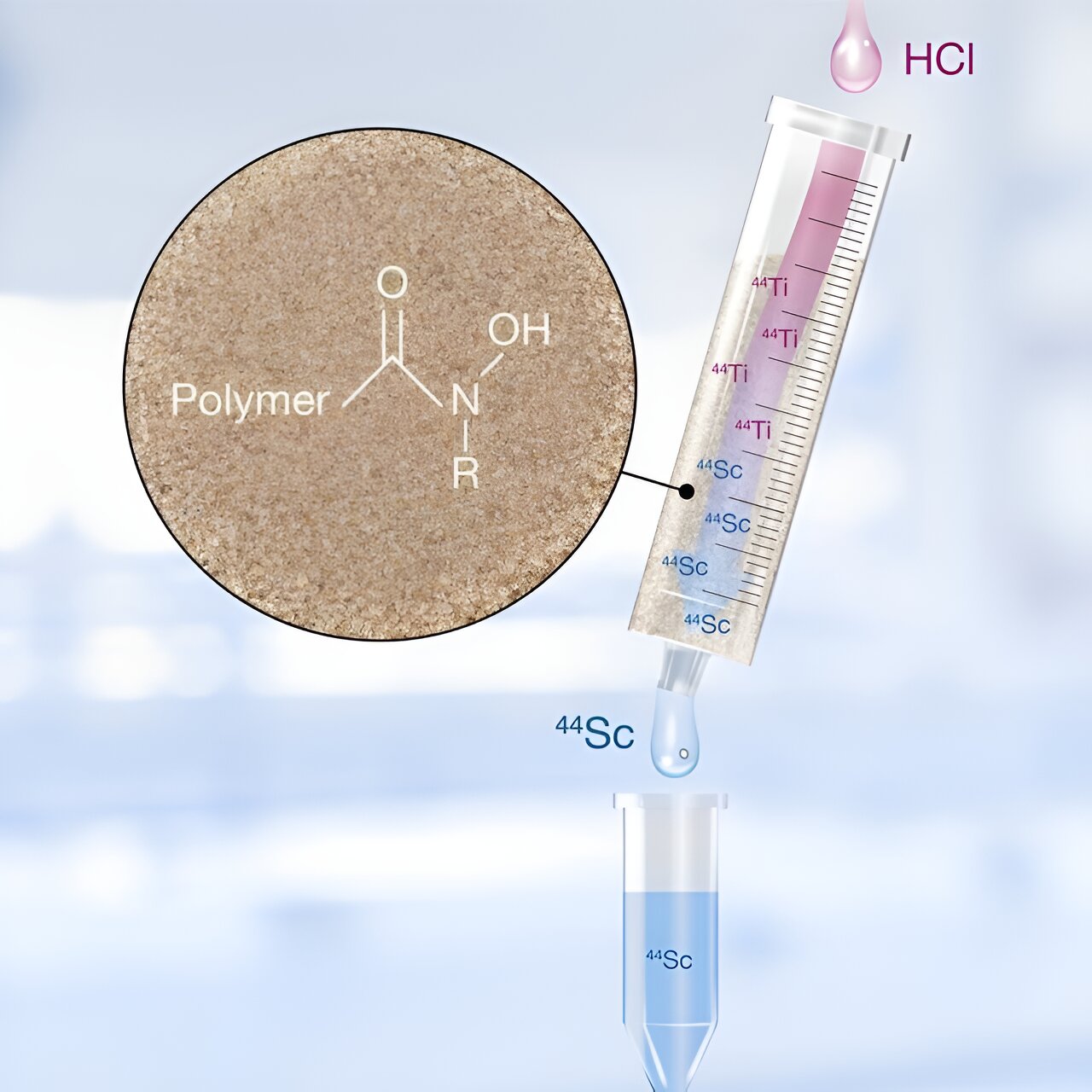A mesmerizing coronal mass ejection erupted from the sun on 28 October 2021, spreading its energetic particles across vast distances. Despite being on opposite sides of the sun and 250 million kilometers apart, both Mars and Earth received this celestial influx.
This extraordinary event marks the first time that a solar phenomenon has been measured simultaneously on Earth, the moon, and Mars. A fleet of international spacecraft, including ESA’s ExoMars Trace Gas Orbiter (TGO), NASA’s Curiosity Mars rover, the CNSA Chang’e-4 moon lander, NASA’s Lunar Reconnaissance Orbiter (LRO), and DLR’s Eu:CROPIS Earth orbiter, detected this outburst. The groundbreaking findings have been published in Geophysical Research Letters.
These simultaneous measurements on different worlds provide invaluable insights into the impact of solar outbursts and how a planet’s magnetic field and atmosphere can shield astronauts from their effects.
Comparing different worlds
The event on 28 October 2021 exemplifies a rare occurrence known as a “ground level enhancement.” During these events, energetic particles from the sun penetrate Earth’s protective magnetic bubble, which shields us from less energetic solar outbursts. This was only the 73rd recorded ground level enhancement since the 1940s, and none have been observed since.
Unlike Earth, the moon and Mars lack their own magnetic fields, allowing solar particles to easily reach their surfaces and even interact with the soil to generate secondary radiation. However, Mars does possess a thin atmosphere that mitigates the impact of lower energy solar particles and slows down highly energetic ones.
Given the moon and Mars’ significance in future human exploration, understanding these solar events and their potential effects on the human body is of utmost importance. Astronauts face the risk of radiation sickness, with a radiation dose above 700 milligray potentially leading to symptoms such as infection and internal bleeding due to bone marrow destruction.
If an astronaut receives more than 10 gray, their chances of survival beyond two weeks are extremely slim. In August 1972, a solar outburst would have exposed an astronaut on the lunar surface to such a high radiation dose, but fortunately, it occurred between the crewed Apollo 16 and 17 missions.
By comparison, during the event on 28 October 2021, the radiation dose in lunar orbit, measured by NASA’s Lunar Reconnaissance Orbiter, was only 31 milligray. Scientist Jingnan Guo, who studied the event, emphasizes that past ground level enhancements indicate an average occurrence exceeding the safe dose level on the moon every 5.5 years if no radiation protection had been provided. Understanding these events is crucial for future crewed missions to the moon.
When comparing the measurements from ExoMars TGO and the Curiosity rover, the protective role of Mars’s atmosphere becomes evident. TGO measured 9 milligray, which is 30 times higher than the 0.3 milligray detected on the surface.
ESA’s inner solar system missions, including Solar Orbiter, SOHO, and BepiColombo, were also caught in the blast of this solar outburst, providing additional vantage points for studying this extraordinary event.
“We are currently living in a golden age of solar system physics. Radiation detectors aboard planetary missions, such as BepiColombo en route to Mercury and Juice cruising to Jupiter, greatly contribute to our understanding of the acceleration and propagation of solar energetic particles,” remarks Marco Pinto, an ESA research fellow specializing in radiation detectors.
Protecting our astronauts
Ensuring the safety of astronauts as they venture into space is a crucial task for ESA. Understanding and predicting intense radiation events play a vital role in this endeavor. Dedicated instruments measure the radiation environment in space, safeguarding critical spaceborne and ground-based infrastructure, as well as astronauts themselves. With timely warnings, astronauts can seek protection through bodywear or shelter in caves. Current policy on the International Space Station advises retreating to the sleeping quarters or the kitchen, where








